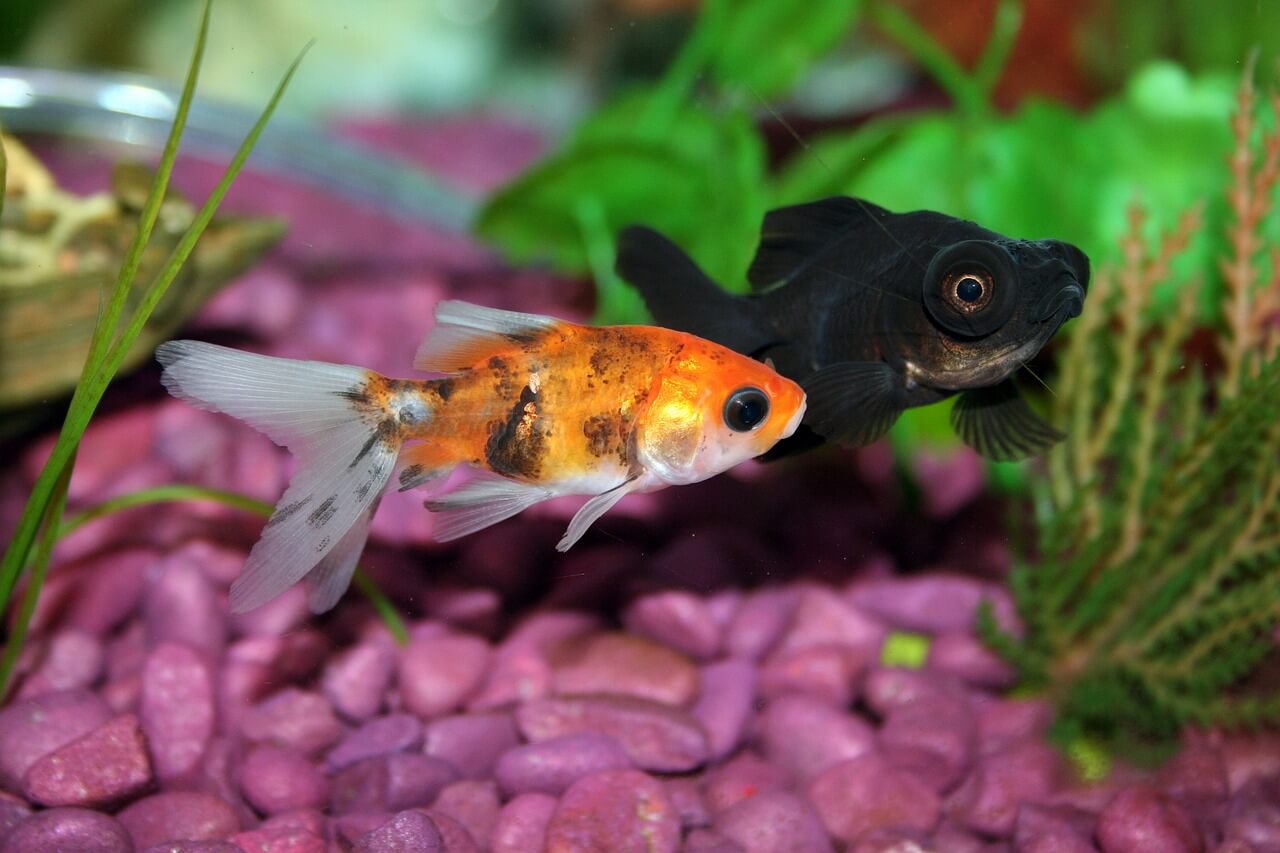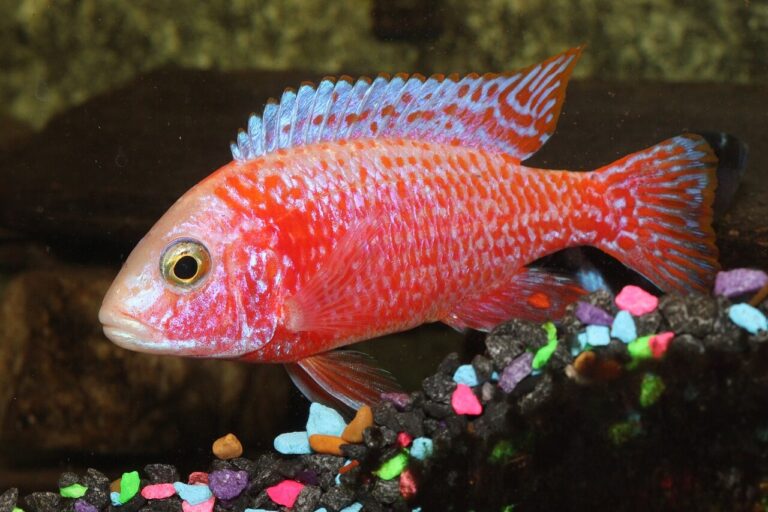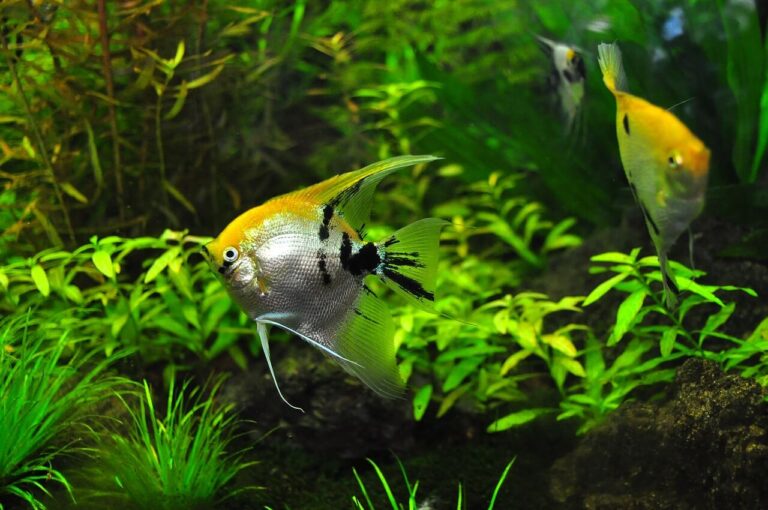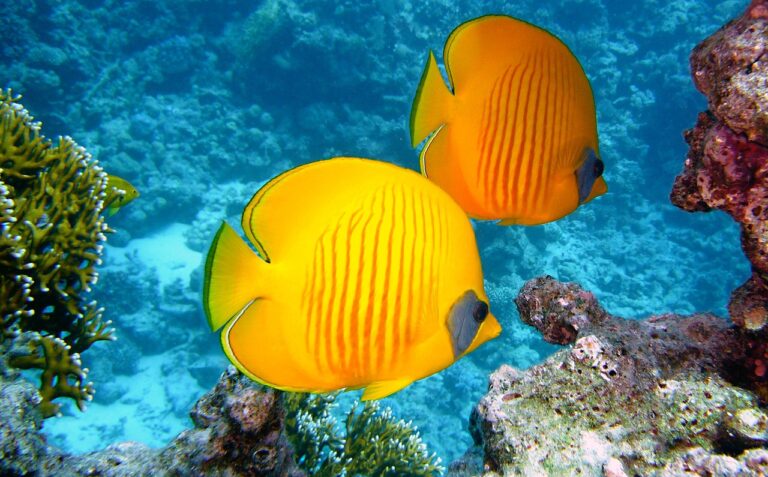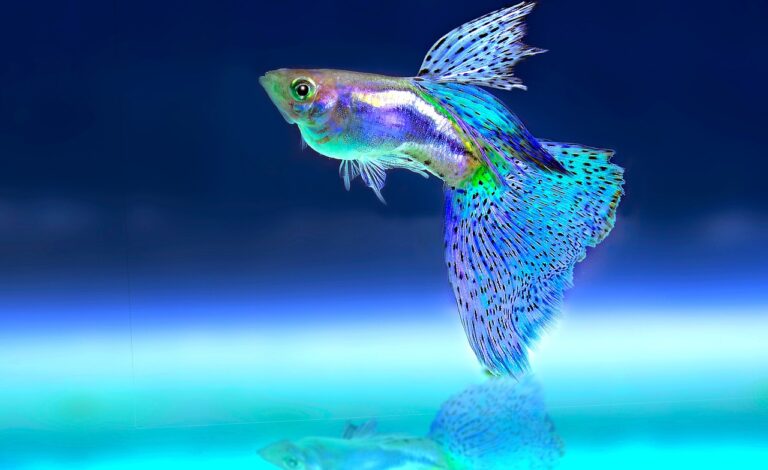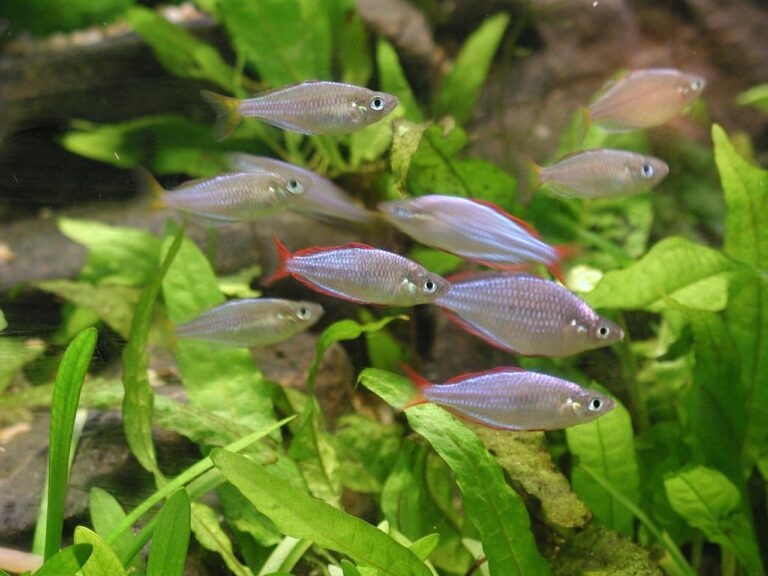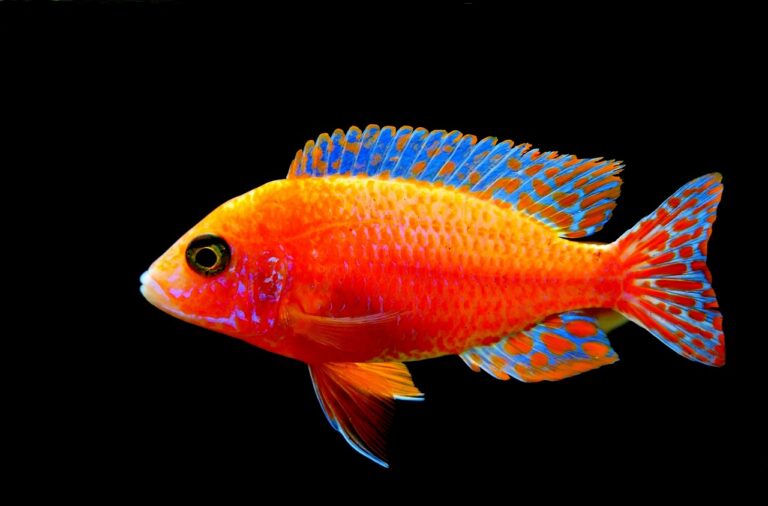How to choose the right aquarium substrate
The aquarium substrate is one of the essential parts of your aquarium. The right substrate can show off the colors of your fish while providing nutrients to your plants. But with so many options available, it can be hard to choose what substrate to put in your aquarium. In this guide on choosing the suitable aquarium substrate, we will cover the different types of substrate, the pro and cons of each, and how to decide what substrate to use in your tank.
Different substrates used for fish tanks offer a wide range of benefits. Some common types of substrate, such as gravel or sand, contain essential minerals that can help support aquatic life’s health and vitality by maintaining stable water parameters in the tank. However, other substrate types can be even more beneficial for your fish. For example, aquatic plants embedded in a soft substrate may better provide hiding spaces and enrichment than regular gravel. This could make fish feel safer and more secure in their environment, leading to reduced stress levels and healthier breeding conditions. Additionally, specific substrates are specially designed to create an optimal natural filtration system that helps keep your tank clean and free of harmful toxins.
Types of aquarium substrate
If you have spent any time in any pet store or done some research online, you know that there are an almost unlimited number of different types of substrates you can put in your aquarium. And not only are there different types, but there are also other colors and brands. Each one can claim that they are best for your aquarium, but that is not always the case.
Aquarium Sand:
Sand is a popular choice for aquariums since it is easy to clean and does not get trapped in the filter. It’s also an excellent option for fish that like to burrow, like certain cichlids. Sand can be used as a standalone substrate or mixed with other types of substrate to create a unique look or pattern for your floor.
Some popular types of sand include play sand, pool filter sand, and aragonite sand. When choosing sand for your aquarium, it is essential to consider the needs of the fish and plants you plan to keep. For example, if you plan to keep fish that like to burrow, you should choose finer grain sand that they can easily dig into.
If you plan to keep live plants, you should choose sand rich in minerals and nutrients to support the growth of the plants. When choosing sand, it is essential to make sure that it is safe for the type of fish and plants you plan to keep and that it does not contain harmful chemicals or release toxic chemicals back into the water.
Pros and cons of sand:
There are several pros and cons when using sand as a substrate in an aquarium.
Pros:
- Sand is easy to clean; it can be easily vacuumed to remove debris and waste.
- Sand is an excellent option for fish that like to burrow, such as certain species of cichlids, as they can easily dig into it.
- Sand helps to create a natural-looking environment in the aquarium.
- Sand can also help to maintain a healthy pH level in the water, particularly with aragonite sand.
Cons:
- Sand can be difficult to plant in, as the roots of plants may have a hard time penetrating it and establishing a healthy root system.
- Sand can cloud the water if not cleaned properly.
- Sand can be more expensive than other types of substrate, such as gravel.
- Some fish may also have a hard time swimming in the sand, as it can make it difficult for them to move around.
It’s important to weigh the pros and cons of using sand as a substrate in your aquarium and consider the specific needs of the fish and plants you plan to keep before deciding.
Aquarium Gravel:
Gravel is a popular choice for aquariums as it’s available in a wide variety of colors and sizes, and it’s also an excellent option for planted aquariums because it provides good drainage and support for the roots of the plants.
Some of the most popular types of gravel include natural river gravel, crushed coral gravel, and colored aquarium gravel; when choosing gravel for your aquarium, it’s important to consider the specific needs of the fish and plants you plan to keep. If you plan to keep live plants, you should choose gravel-rich in minerals and nutrients to support the growth of the plants. It’s important to make sure that the gravel you choose is safe for the type of fish and plants you plan to keep and that it does not contain harmful chemicals or release toxic materials into the water.
The size of the gravel is also important, as some fish and plants may prefer larger or smaller sizes. It’s also important to take into account the aesthetics of the aquarium and choose a color and texture that complements the overall look you want to achieve.
There are several pros and cons when using gravel as a substrate in an aquarium.
Pros and Cons of Gravel
Pros:
- Gravel is a versatile option, as it’s available in a wide variety of colors and sizes, which allows for many different aesthetic possibilities.
- Gravel is a good option for planted aquariums, as it provides good drainage and support for the roots of the plants.
- Gravel can help to maintain a healthy pH level in the water, particularly with crushed coral gravel.
- Gravel is also relatively inexpensive compared to other types of substrate.
Cons:
- Gravel can be harder to clean than sand, and it may require more maintenance.
- Gravel can trap debris and waste, making it more difficult to remove and clean.
- Gravel can be heavy, which can make it difficult to move or change the layout of the aquarium.
- Some fish may have a hard time swimming in gravel, as it can make it difficult for them to move around.
It’s important to weigh the pros and cons of using gravel as a substrate in your aquarium and consider the specific needs of the fish and plants you plan to keep before making a decision. Additionally, it’s always good to consult with an expert or do more research before making a final decision.
Crushed Coral
Crushed coral is an excellent option for reef aquariums, as it helps to maintain a higher pH level in the water. It’s also a visually pleasing option, with its white color and natural texture.
When choosing crushed coral as a substrate, it’s important to consider the specific needs of the fish and plants you plan to keep. For example, if you plan to keep coral, it’s important to choose a crushed coral that is rich in calcium and other minerals to support the growth of the coral. Additionally, it’s important to make sure that the crushed coral you choose is safe for the type of fish and plants you plan to keep and that it does not contain harmful chemicals or release toxic materials into the water.
It’s also a good idea to check the size of the crushed coral, as some fish and plants may prefer larger or smaller sizes.
Finally, it’s important to take into account the overall look you want to achieve in the aquarium and choose a crushed coral that complements the aesthetic.
Pros and Cons of Crushed Coral
There are several pros and cons when using crushed coral as a substrate in an aquarium.
Pros:
- Crushed coral can help to maintain a higher pH level in the water, which is beneficial for certain types of fish and plants, particularly coral.
- Crushed coral can add a natural and visually pleasing texture to the aquarium.
- Crushed coral is a popular choice for reef aquariums, as it can help to create a natural-looking environment for coral and other marine life.
- Crushed coral is also relatively inexpensive compared to other types of substrate.
Cons:
- Crushed coral can be difficult to clean and may require more maintenance than other types of substrate.
- Crushed coral can trap debris and waste, making it more difficult to remove and clean.
- Crushed coral can be heavy, which can make it difficult to move or change the layout of the aquarium.
- Some fish may have a hard time swimming in crushed coral, as it can make it difficult for them to move around.
It’s important to weigh the pros and cons of using crushed coral as a substrate in your aquarium and consider the specific needs of the fish and plants you plan to keep before deciding. Additionally, it’s always good to consult with an expert or do more research before making a final decision.
Soil:
Soil is an excellent option for planted aquariums as it provides good drainage and support for the roots of the plants. It also can help to maintain a healthy pH level for plants.
The soil can be used as a standalone substrate, or it can be mixed with other types of substrate to create a unique look. When choosing soil for your aquarium, it’s important to consider the specific needs of the plants you plan to keep. For example, if you plan to keep live plants, you should choose soil that is rich in minerals and nutrients to support the growth of the plants.
Additionally, it’s important to make sure that the soil you choose is safe for the type of fish and plants you plan to keep, and that it does not contain harmful chemicals or release toxic materials into the water. It’s also a good idea to research the different types of soil available in the market and consult with an expert or do more research before making a final decision.
There are several pros and cons to consider when using soil as a substrate in an aquarium.
Pros and cons of soil:
Pros:
- Soil is a great option for planted aquariums, as it provides good drainage and support for the roots of the plants.
- Soil can help to maintain a healthy pH level for plants.
- Soil can provide a natural and visually pleasing environment for plants.
- Soil can also be used to create a natural-looking environment in the aquarium.
Cons:
- Soil can be difficult to clean and may require more maintenance than other types of substrate.
- Soil can cloud the water if not cleaned properly, which can make it difficult to see the fish and plants in the aquarium.
- Soil can be more expensive than other types of substrate, such as gravel.
- Some fish may have a hard time swimming in soil, as it can make it difficult for them to move around.
It’s important to weigh the pros and cons of using soil as a substrate in your aquarium and consider the specific needs of the fish and plants you plan to keep before making a decision. Additionally, it’s always good to consult with an expert or do more research before making a final decision.
Aquarium Pebbles:
Pebbles can be a great option for aquariums, as they can be used in a variety of ways. They can be used as a standalone substrate, or they can be mixed with other types of substrate to create a unique look. Pebbles can be used in a planted aquarium as well; they provide good drainage and support for the roots of the plants. When choosing pebbles for your aquarium, it’s important to consider the specific needs of the fish and plants you plan to keep. For example, if you plan to keep live plants, you should choose pebbles that are rich in minerals and nutrients to support the growth of the plants. Additionally, it’s important to make sure that the pebbles you choose are safe for the type of fish and plants you plan to keep and that they do not contain harmful chemicals or release toxic materials into the water. It’s also important to take into account the aesthetics of the aquarium and choose a color and texture that complements the overall look you want to achieve.
Pros and cons of pebbles
There are several pros and cons to consider when using pebbles as a substrate in an aquarium.
Pros:
- Pebbles are a versatile option, as they can be used in a variety of ways in the aquarium, such as a standalone substrate or mixed with other types of substrate to create a unique look.
- Pebbles can provide good drainage and support for the roots of live plants in the aquarium.
- Pebbles can add a natural and visually pleasing texture to the aquarium.
- Pebbles are relatively easy to clean and maintain compared to other types of substrate.
Cons:
- Pebbles can trap debris and waste, making them more difficult to remove and clean.
- Pebbles can be heavy, which can make it difficult to move or change the layout of the aquarium.
- Some fish may have a hard time swimming in pebbles, as it can make it difficult for them to move around.
- Pebbles can be more expensive than other types of substrate, such as gravel.
It’s important to weigh the pros and cons of using pebbles as a substrate in your aquarium and consider the specific needs of the fish and plants you plan to keep before making a decision. Additionally, it’s always good to consult with an expert or do more research before making a final decision.
Ceramic or Terracotta:
Ceramic or Terracotta pots can be a good addition to a freshwater aquarium as long as they are not glazed and have not been finished with poisonous chemicals. You can find these pots at most home improvement or gardening stores, and they come in multiple sizes for anything that you would want to use them for.
Compatibility with Fish and Plants
Fish
When it comes to fishkeeping, substrate selection is an important factor to consider when setting up your aquarium. Different species of fish have different preferences when it comes to the type of substrate that they prefer. Many cichlids are best kept with sandy substrates, which provide their bodies with safety and their burrowing activities with ease.
On the other hand, some large goldfish and koi may require more natural gravel as a base for their pond or aquarium, allowing them to be at home in their environment and providing an aesthetically pleasing look. Ultimately, your substrate should be chosen based on the species you’re looking to keep in order for them to flourish in their home.
Plants:
There is a lot of information to consider when selecting a substrate for their plants. Different plants have different substrate needs, so it is important to research what type of substrate works best for the specific plant species. For instance, some plants may prefer substrates such as sand or gravel that provide excellent aeration and drainage. Others may require substrates containing fertilizers to thrive, and some plants may even need a specific pH-level substrate that helps balance out the nutrients they receive from other sources. Knowing the right substrate for each particular plant species is key to having a successful garden or terrarium!
Functionality:
Some substrates are easier to clean than others. Sand is one of the easiest substrates to keep clean because debris is unable to penetrate it, and everything stays on top of the sand.
Gravel and pebbles can be harder to clean because debris can get mixed in with the gravel making it harder to vacuum out.
You also need to consider that some substrates can help maintain healthy levels of specific nutrients in the water, which can be beneficial to plants and to your fish. Substrates like crushed coral can help control the pH balance, which can help with plant growth.
Aesthetics:
Color and texture: The color and texture can have a big impact on the overall look of your aquarium. You should take some time to look at fish tanks and see what colors you prefer and what types of texture will go best with the theme of your tank.
Size: The size of the substrate in your aquarium can play a role in how it looks. Some aquarist prefers a larger size of substrate that covers the entire aquarium, while other like a smaller size that leaves some of the bottoms visible. The size of the substrate can also affect the overall look and feel of the aquarium.
Safety Concerns:
Harmful chemicals: When choosing a substrate, it is important to make sure that your substrate is healthy for your fish and will not harm them in any way. Some substrates can leach chemical or toxic material into the water. It is always a good idea to know where the substrate is manufactured and to carefully clean and rinse your substrate before you put it into the aquarium.
Algae growth: Some substrates can promote algae growth by adding too many nutrients into the water. If you use soil as a substrate, you will find that your water is more susceptible to growing algae.
Tips for choosing the right substrate:
- Consider the needs of the fish and the plants you want to keep:
- Take into account the maintenance requirements of the substrate, like cleaning and overall upkeep
- Consider the overall aesthetics you want to achieve in your aquarium.
- Make sure to research the different brands and make sure there are no safety concerns with the substrate.
- Consult with a local expert at your local fish store. They will have your best interests in mind and help you choose the best substrate for the fish you want to keep.
How to properly maintain and clean the substrate:
Regularly cleaning your substrate is key to having a healthy aquarium. By cleaning the substrate, you are removing fish waste and uneaten food that can lead to ammonia spikes and unhealthy water parameters.
Step one: vacuum your substrate
You should vacuum your substrate on a weekly basis; This will remove any uneaten food and help keep your water cleaner. When vacuuming your substrate, you should make sure to agitate it just a little bit to get at all the uneaten food that is mixed in with your gravel.
Step two: Clean your substrate
If your substrate gets really dirty, you may have to remove some of it and wash it off. This should only be done in extreme circumstances because it will cause your water to cloud up.
Replace your substrate as needed.
The substrate can naturally get broken down and sucked into the filter or sucked up when vacuuming the substrate. This is why it is important to consistently add back enough to keep your substrate at a level that works best for your fish and plants.
Frequently asked questions
Can I mix different types of substrates in my aquarium?
Yes, you can mix different types of substrates in your aquarium. For example, you could put soil at the bottom of your aquarium for your plants and then put gravel on top of that to keep it from clouding the water.
How often should I replace the substrate in my aquarium?
You should replace the substrate in your aquarium whenever it is losing its effectiveness. With plants, you should replace them yearly, and with just plain gravel or sand, you should replace them whenever the gravel is not at the correct thickness.
Can I use regular sand from the beach as an aquarium substrate?
While you could use regular sand from the beach, you need to make sure that you clean and sanitize it really well. There is a good chance that it will contain toxic chemicals that have naturally leached into it over time, and you will need to carefully clean it first.
